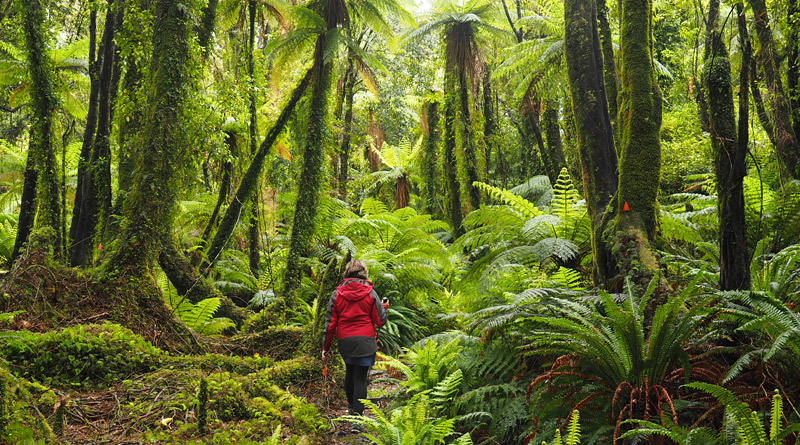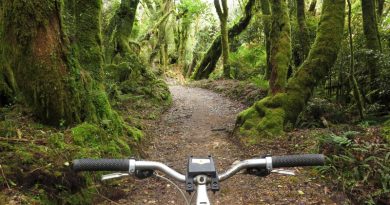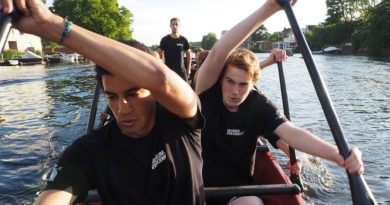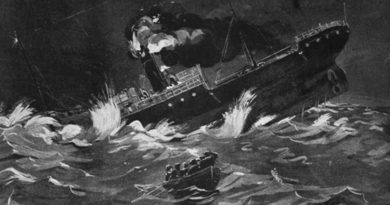Fiordland’s Hollyford Valley: A walk back in time
Long before flush toilets and formal tracks arrived in Fiordland — and certainly long before wilderness lodges, fine cuisine and helicopter supply drops — the Greatest Man That Ever Lived would herd mobs of wild cattle the length of the Hollyford Valley.
Once, the Greatest Man That Ever Lived, otherwise known as Davey Gunn, rowed, rode and ran non-stop for 90km to raise the alarm after a plane crash at remote Big Bay.
His 20-hour dash saved the lives of the pilot and several badly injured passengers.
Less famous, but in a way just as awe-inspiring, was Davey’s response when he was charged by a cow and fell onto a splintered beech stump, ripping his scrotum open.
The great man rode to the nearest musterer’s hut where he calmly stitched himself back together, minus anaesthetic. And then he got back in the saddle and got back to work.
Before we get too far into this story I should point out that I am nothing at all like Davey Gunn.
Where Davey bashed through untamed bush and forded wild rivers I walked on well-formed trails and crossed expertly engineered swingbridges.
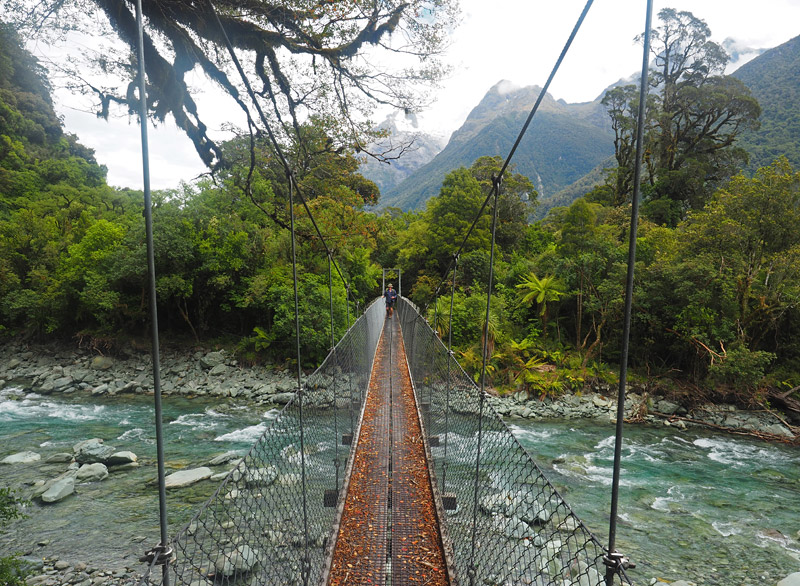
Where Davey lay down his head in earth-floored huts after dinners of maggoty venison, I slept in luxury lodges and ate fine meals washed down with chilled craft beer.
And where Davey spent days trudging over inhospitable terrain I whisked by effortlessly in a jetboat.
I owed my comfort to Hollyford Wilderness Experience, a Ngāi Tahu-owned company offering guided walks the length of Fiordland’s longest valley.
You can, of course, walk the 56km Hollyford Track on your own. Doing it that way takes about five days to remote Martin’s Bay; you then have to fly out from a bush airstrip or turn around and walk the same way back.
The guided walk cleverly condenses the track into a kind of three-night highlight package. You get to experience the best bits, skip two days of drudgery on the aptly named Demon’s Trail, stay in the company’s lodges, and wrap it all up with a spectacular helicopter flight to Milford Sound.
· · · · ·
Our group of 16 — the maximum per trip — is led by guides Claudia, who gently makes sure stragglers like me aren’t left behind, and Bard, who is possibly a bit like Davey Gunn.
More than 420 trips down the Hollyford have made him extraordinarily fit. He has a jaw that looks like it’s been chiselled from the local granite and a voice like a foghorn, a useful attribute for bush commentaries and wake-up calls.
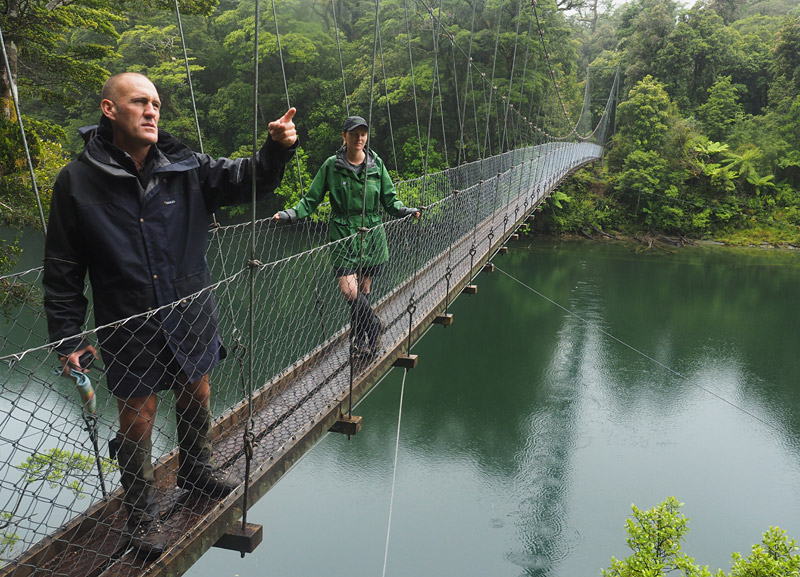
Bard is also a walking encyclopedia of the Hollyford Valley’s botanical wonders and human history, in particular the exploits of Davey Gunn. (In case you hadn’t guessed, the epithet “The Greatest Man That Ever Lived” comes from Bard.)
At 19.5km, the first day of the guided walk is the longest. It’s also the only time we have to carry all our own gear — though that means just clothing, camera and toiletries, because everything else is provided.
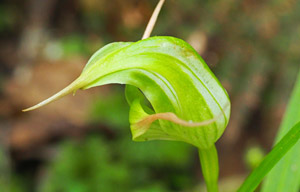
The previous afternoon we’d been driven from Queenstown to Te Anau for our first night’s accommodation and a briefing on what to expect. It was also a chance to borrow a raincoat and pack for anyone whose own gear wasn’t up to the job.
Some rain was forecast but Bard reassured us it wasn’t what he called “Fiordland rain” — that’s the kind that dumped 1100mm in 48 hours in 2020, washing away bridges and wrecking one of the lodges.
For much of the first day the track ambles through beech forest beside the pounamu-green Hollyford River. Just across the water the rugged Darran Mountains, Fiordland’s highest, rise to more than 2700m.
But Bard’s attention is taken by the botanical wonders at our feet.
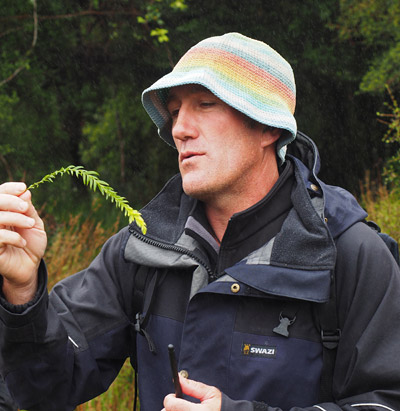
The tutukiwi (“standing kiwi”) is a tiny orchid that really does look like a kiwi. A modest yellow moss boasts the country’s longest Latin name, while a fern called Tmesipteris is a real-life time-traveller unchanged for 200 million years.
Bard also points out the plants that heal, such as the tutu leaves All Black great George Nepia bathed in after particularly bruising games, and the plants you can eat. The tips of the supplejack vine, called tunaroa or “long eel” in te reo, taste like raw green beans.
All too often the stories shared on guided tours in New Zealand start in the 1800s as if the previous five centuries never happened, but that’s not the way in this Ngāi Tahu-owned business.
Bard tells us how valleys such as the Hollyford were well-trodden routes on the South Island’s pounamu trails, providing access to the most valuable resource in Māoridom. He also tells about the last chief to keep the home fires burning in the Hollyford Valley. His name, Tūtoko, lives on in the name of Fiordland’s highest peak.
· · · · ·
The first real surprise of the day comes when we reach Pyke Lodge. Our packs aren’t heavy but it’s been a long day all the same as we’re welcomed by hosts Murray and Joyce.
Instead of the long drop you usually encounter at trampers’ huts the lodge boasts an indoor flush toilet and hot showers. There’s also a comfy lounge, rebuilt after the 2020 flood, and a huge platter laden with crackers, cheeses and other treats. There’s even a choice of wines and craft beers. A few cold Pilsners go down very well.
Murray and Joyce have somehow performed a miracle in their remote off-grid kitchen, serving up plates of barbecued venison, roast vegetables and kumara stacks worthy of a fancy city restaurant.
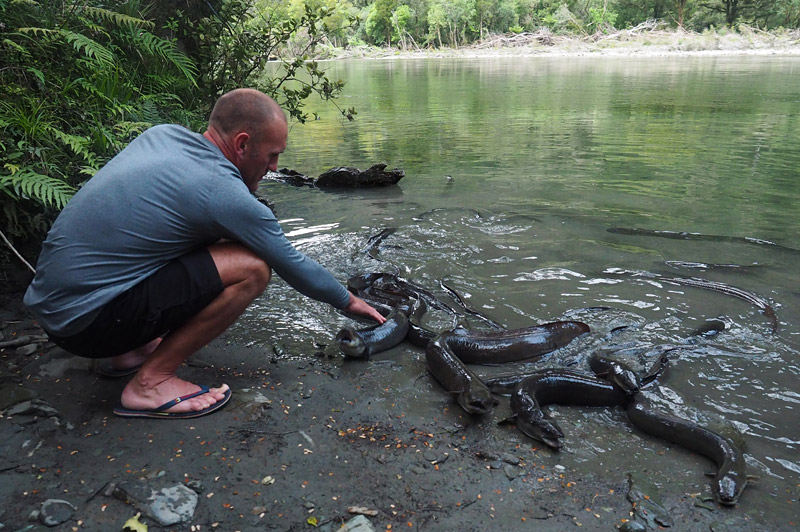
After dessert it’s time to see the wildlife. A writhing mass of eels, the biggest as thick as my arm, is waiting in the shallows of Pyke Stream. Our group is the first of the season yet somehow they know we’ve arrived and there will be leftover venison.
They’re not delicate eaters so we take turns feeding them with tongs to avoid losing fingers as they slither up onto the mud, jaws snapping blindly at the air.
· · · · ·
The second full day of the trip is the best, Bard reckons. It turns out he’s right.
After a breakfast of eggs benedict we lug our packs to the river and pile into a 20-seat jetboat, which roars down the Hollyford — swerving from bank to bank, dodging rocks, trees and the odd rapid — then down Lake McKerrow, its far shore shrouded atmospherically in cloud.
The 24km trip takes 40 minutes. If we’d walked it would’ve taken two days on the Demon’s Trail, which has been described as the toughest non-Alpine walk in New Zealand. I’m not sorry to skip it.
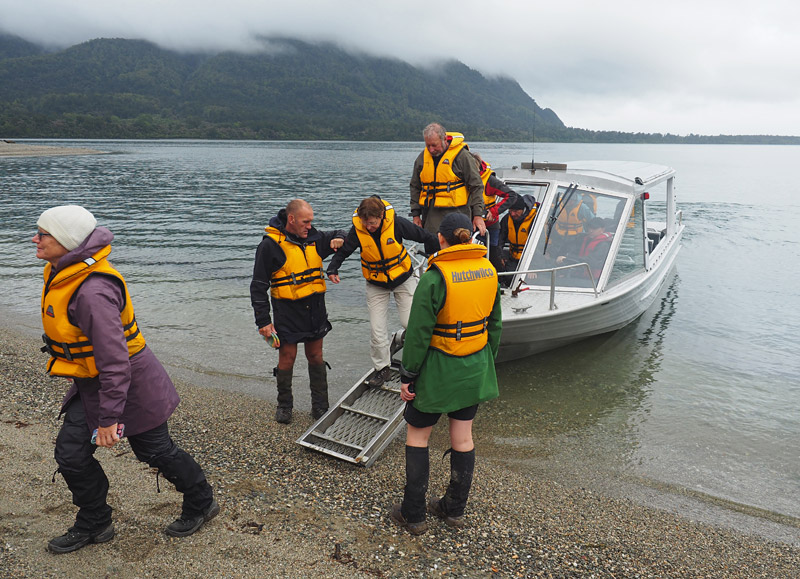
We’re dropped at what used to be the lakefront settlement of Jamestown, where settlers were duped into buying plots of land with promises of flat, arable land as far as the eye could see. Instead, all they found when they arrived in 1870 was bush.
Bard is in his element as he recounts the settlers’ tales of hardship and starvation. A plaque is the only sign a town ever existed here.
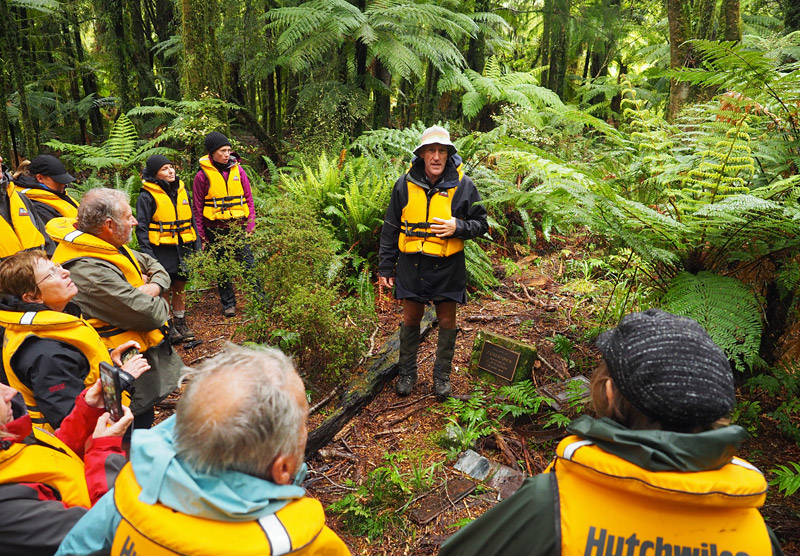
From the end of the lake the track meanders through an ancient podocarp forest. Bard urges us to proceed alone and in silence, to better appreciate the forest’s majesty.
Most of our gear stays on the boat so we’re only carrying day bags. We don’t even have to carry water — every stream gushing from the hills is crystal clear. We’re encouraged to drink deeply.
We are surrounded by towering rimu and kahikatea so cloaked in epiphytes, ferns and mosses it’s hard to tell what’s underneath. The ground is carpeted in ferns and thick, sponge-like mosses.
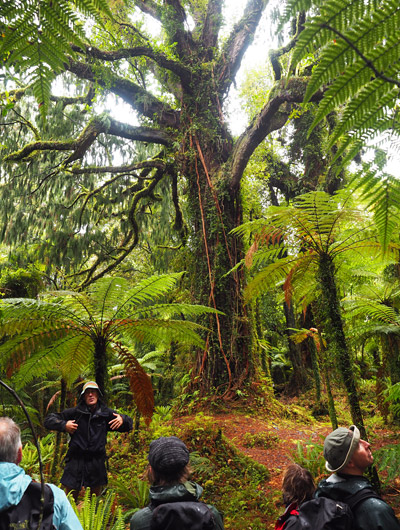
Unlike the river’s upper reaches, this part of the valley is subject to intensive pest control by the Hollyford Conservation Trust. The stillness of yesterday is replaced by a cacophony of tūī and korimako calls, the screech of kākā and long-tailed cuckoos, and the beating of kererū wings.
Lunch is served in a safari tent in the bush with rain drumming on the canvas roof. It feels like a scene from a fairytale — no one’s here, yet a pot of soup is bubbling on the stove and freshly baked bread is waiting on the table.
As we eat Bard shares more tales. About Davey Gunn of course — how the great man, between self-surgery and life-saving feats of stamina, pioneered tourism in the Hollyford by leading horse treks to the coast — but also about those who’ve taken the guided walk in more recent times.
They include actor Harrison Ford, apparently a down-to-earth character with a keen interest in conservation, and dedicated tramper Helen Clark.
Clark didn’t want a fuss so the company made sure she was the only Kiwi in her group. It took three days before the other walkers realised she was the Prime Minister of New Zealand.
Another jetboat ride takes us to the end of the lake. From there we follow a muddy track to the shore where we hope to see some of the locals.
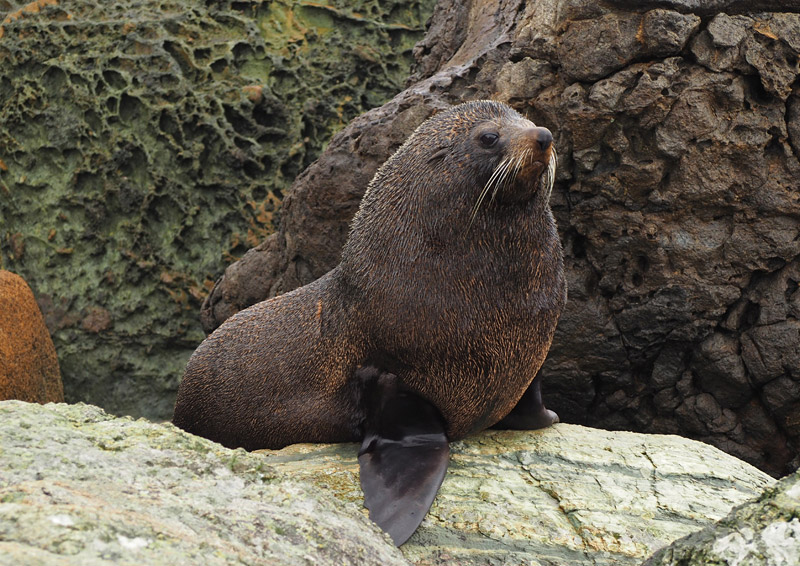
We know we’re in luck when something huge comes crashing out of nowhere through the flax and lumbers across the track. For a creature that looks like a mound of blubber with flippers, a bull seal can move with surprising speed.
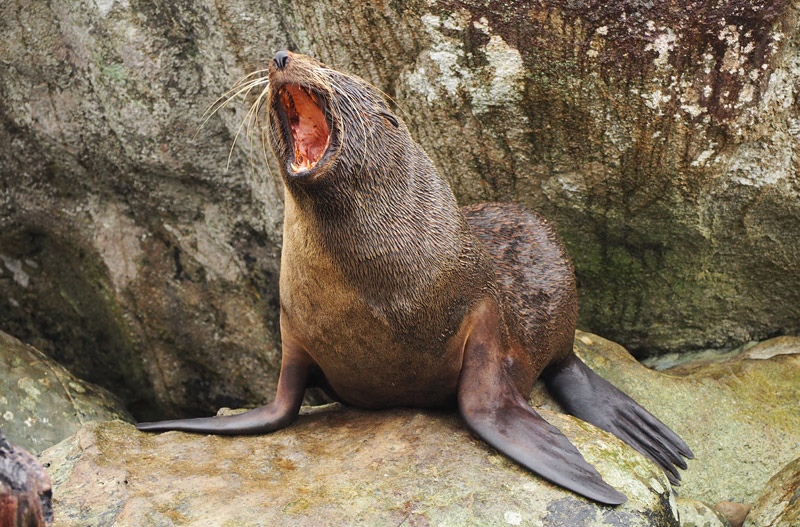
At times the Long Reef colony is home to as many as 1500 fur seals. We’re stoked to see about a dozen at close quarters. They pay us little attention, instead conversing among themselves with yelps and dog-like barks. In a lesson about the universality of parenting, we watch as a harassed mum gives an attention-seeking cub a good telling off.
The real treat, however, is waiting for us on the way back. Bard and Claudia have done their best not to raise our hopes of seeing the world’s second rarest penguin.
That’s partly, of course, because they’re incredibly rare. But it’s also because Fiordland crested penguins have never been seen here after December 7, which is just a few days away. Despite not having access to calendars they head to the Sub-Antarctic Islands at exactly the same time every summer.
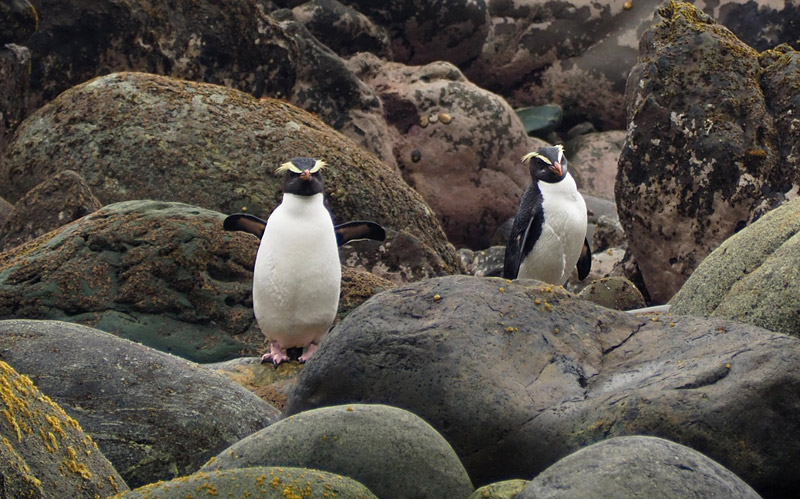
And yet, as we round a headland, a pair of penguins are eyeballing us from the shore. Their feathered brow tufts make then look like a couple of Angry Birds, except it’s hard to look angry when you’re waddling comically across the rocks and flapping your little flippers.
· · · · ·
Our last night’s accommodation is another step up in comfort. Our hosts, Mandy and Duncan, greet us even before we reach Martin’s Bay Lodge.
There’s a rush for the hot showers and the drying room for our sodden clothes; in the lounge a fire’s roaring and a platter of treats is waiting. Dinner is Ngāi Tahu blue cod with sautéed vegetables and a dessert to die for.
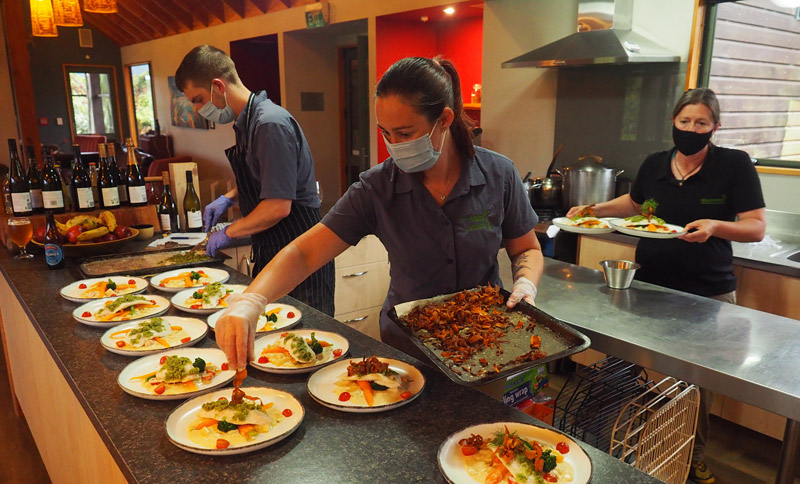
Afterwards Bard gives us a briefing on the day ahead. By now a rapport has developed among the group and there’s plenty of good-natured ribbing. A fellow named Sam cops the brunt of it — he hasn’t been allowed to forget an incident on the first night when he mistook a tube of Deep Heat for toothpaste — but he gives as good as he gets.
Instead of the next day’s forecast Bard recites an ode to Fiordland weather:
It rained and rained and rained
The average fall was well maintained
And when the tracks were simply bogs
It started raining cats and dogs
And then after a drought of half an hour
We had a most refreshing shower
Then the most curious thing of all
A gentle rain began to fall
The next day was also fairly dry
Save for the deluge from the sky
Which wetted the party to the skin
And after that the rain set in.
· · · · ·
The first time I’m woken on the final day is by the ominous sound of rain on the roof. The second time is at 6.45am as Bard delivers a mihi in that foghorn voice, farewelling the night and greeting the new day. This might be a luxury tramping experience but there’s no lying around in bed.
After a cooked breakfast we take a short jetboat ride across the river to explore wild, windswept Martin’s Bay.
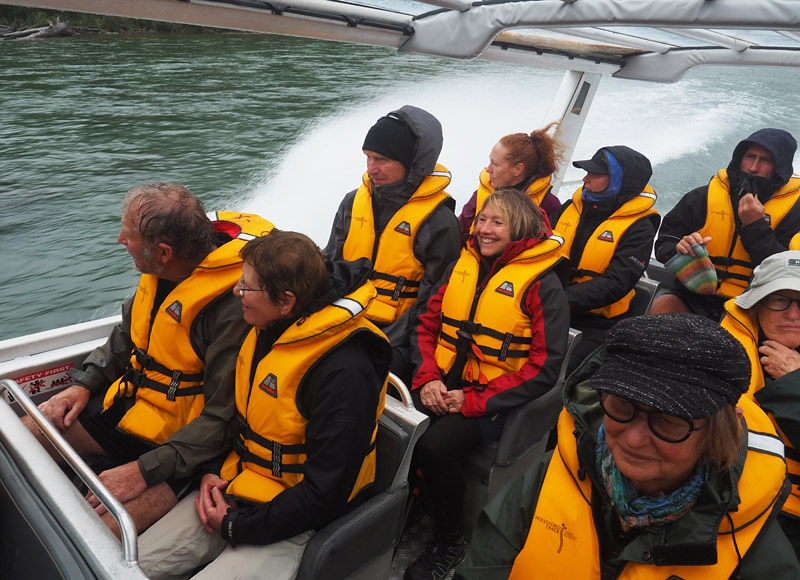
It’s a testament to the hardiness of my fellow walkers — a mix of Waikato farmers, Marlborough winegrowers and Whangārei retirees — that no one opts to stay in the lodge by the fire. Maybe it’s the stories of Davey Gunn’s bravery still ringing in their ears.
We wrap up in wet weather gear, even keeping our lifejackets on for extra warmth, and set off to another ill-fated European settlement where only a hearth and a giant macrocarpa remain. Bard shares more tales of hardship but this time they’re tempered by stories of love and survival against the odds.
Extraordinarily, the sand here is carpeted in a tiny forest of lichens, mosses, pincushion plants and ferns the size of a fingernail. It’s like being in an alpine meadow though we’re only a few metres above sea level.
· · · · ·
After lunch rain is still falling and I’m fretting. I’ve been looking forward to the helicopter flight that will deliver us to Milford Sound but I can barely see a few metres through the mist.
The cloud lifts just as the chopper lands to collect the first passengers.
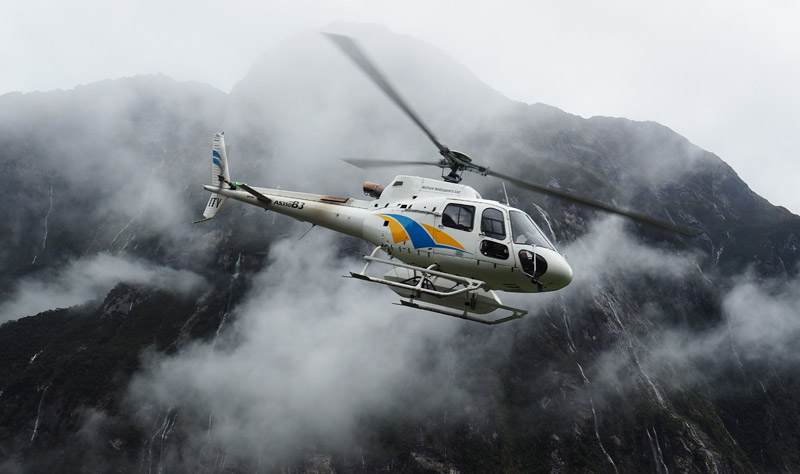
As the lodge shrinks below us the pilot points the helicopter down the coast, over raging creeks and seals lounging on the rocks, before swinging inland into the mouth of Milford Sound.
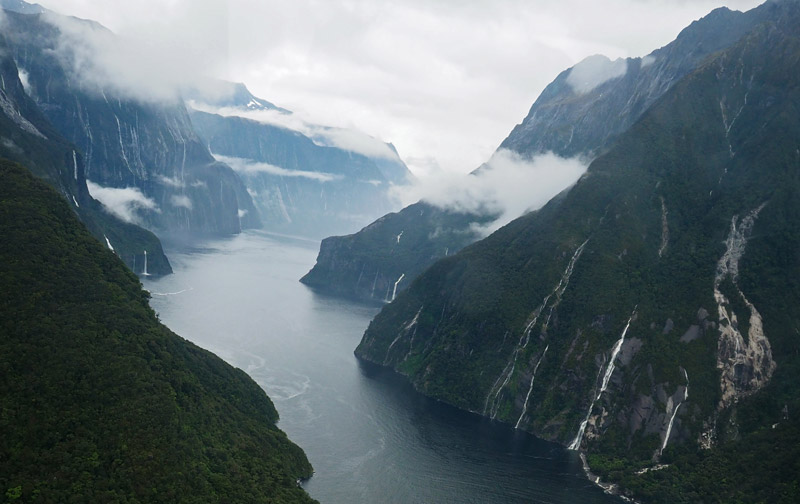
It’s often said Milford Sound looks its best in the rain. I’m sceptical at first but as the chopper hugs the fiord’s glacier-carved walls I see countless silver ribbons of water cascading down the cliffs to the sea hundreds of metres below. Everywhere I look, plunging down every mountainside, water gushes and leaps and roars.
· · · · ·
If you were wondering what became of the Greatest Man That Ever Lived, he is in the valley still. Swept off his horse while crossing a flooded river in 1955, his body was never found but his legend lives on, as does his idea of sharing the beauty of the Hollyford Valley.
The valley’s first explorers and inhabitants live on, too, in the tales of the pounamu trail and the names etched in the mountains. Centuries later people still come here to follow in their footsteps, searching not for greenstone but for a still wild and unspoiled land.
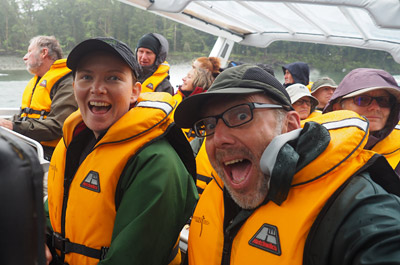
The author was a guest of Ngai Tāhu Tourism. First published in Travel magazine, New Zealand Herald, April 2022.
For similar stories about hiking in New Zealand check out Braving New Zealand’s Old Ghost Road, Walking the Queen Charlotte Track (the easy way) or Takahē and naked trampers on the Heaphy Track.

